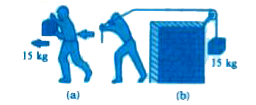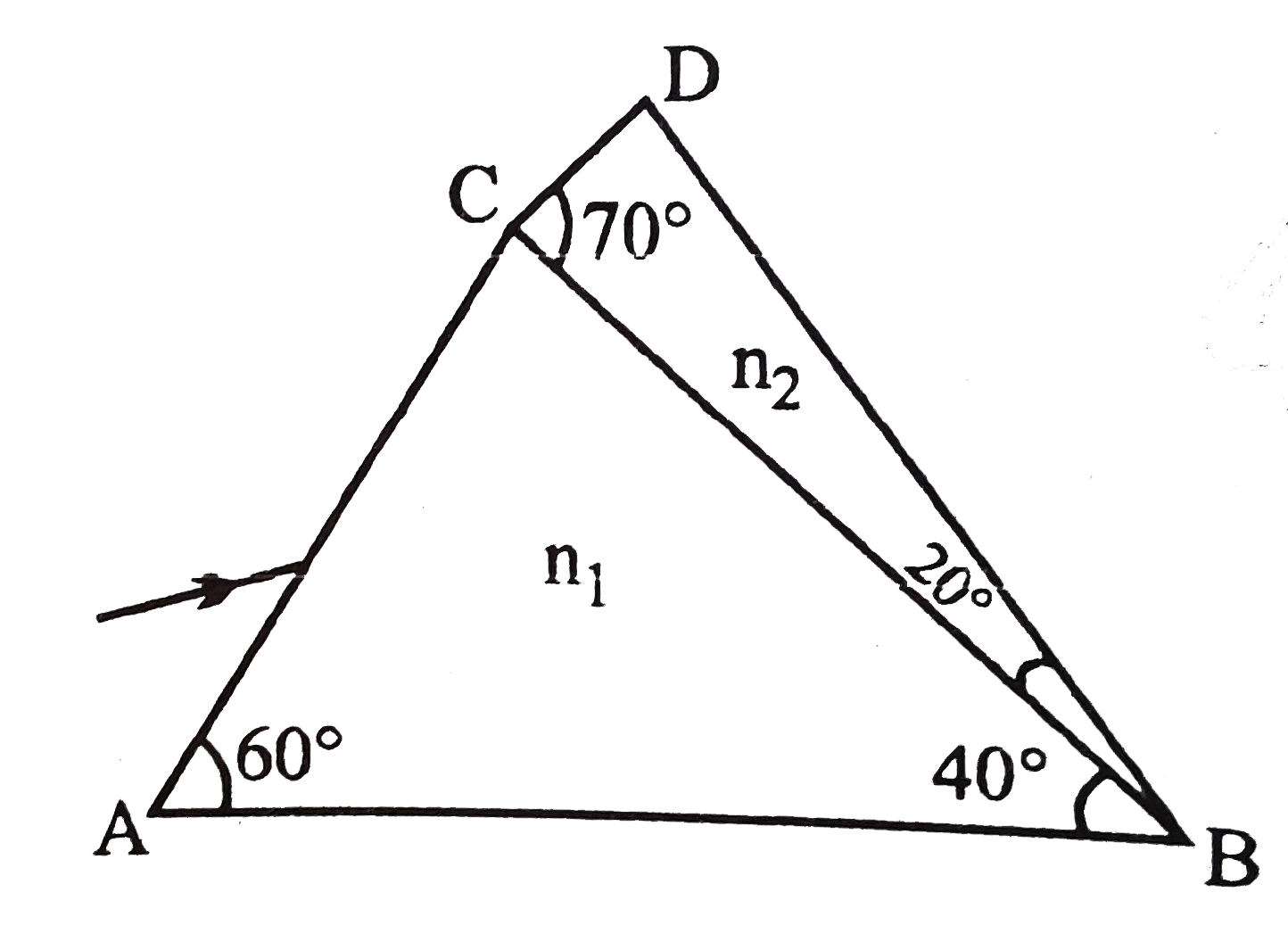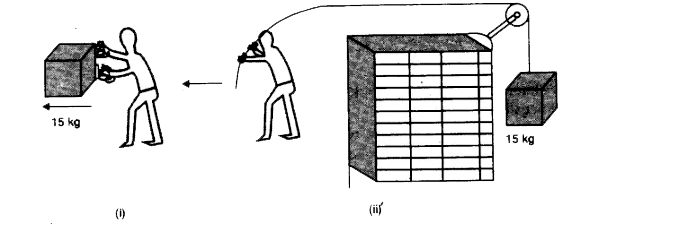An artificial satellite orbiting the earth in very thin atmosphere loses its energy gradually due to dissipation against atmospheric resistance , however small .Why then does its speed increase progressively as it comes closer and closer the earth ?
 Solution in Gujrati
Solution in Gujrati
The correct Answer is:Kinetic energy increases, but potential energy decreases, and the sum decreases due to dissipation against friction.
Step by step video & image solution for An artificial satellite orbiting the earth in very thin atmosphere loses its energy gradually due to dissipation against atmospheric resistance , however small .Why then does its speed increase progressively as it comes closer and closer the earth ? by Physics experts to help you in doubts & scoring excellent marks in Class 12 exams.
Updated on:21/07/2023Topper's Solved these Questions
- GRAVITATIONBOOK - ALLEN CHAPTER - GRAVITATIONEXERCISE - EXERCISE 1
96 Videos
- GRAVITATIONBOOK - ALLEN CHAPTER - GRAVITATIONEXERCISE - EXERCISE 2
26 Videos
- GRAVITATIONBOOK - ALLEN CHAPTER - GRAVITATIONEXERCISE - BOX-3
8 Videos
- GEOMETRICAL OPTICSBOOK - ALLEN CHAPTER - GEOMETRICAL OPTICSEXERCISE - subjective
14 Videos
- KINEMATICS-2DBOOK - ALLEN CHAPTER - KINEMATICS-2DEXERCISE - Exercise (O-2)
47 Videos
Similar Questions
Newton's law of gravitation :
View SolutionTwo satellites of earth S1 and S2 are moving in the same orbit. The mass of S1 is four times the mass of S2. Which one of the following statements is true?
View SolutionIf the gravitational acceleration at surface of earth is g, then increase in potential energy in lifting an object mass m to a height equal to the radius R of earth will be-
View SolutionA prism of refractive index n1 & another prism of reactive index n2 are stuck together without a gap as shown in the figure.The angle of the prisms are as shown. n1&n2depend onλ,the wavelength of light according to n1=1.20+10.8×104λ2&n2=1.45+1.80×104λ2 where λ is in nm.

(i)Calculate the wavelength λ0for which rays incident at any angle on the interfaceBCpass through without bending at that interface.
(ii) for light of wavelength λ0,find the angle of incidencei on faceACsuch that the deviation produced by the combination of prism is minimum.
View SolutionA particle is moving in xy-plane .At certain instant the components of its velocity and acceleration are as follows ux=3m/s,uy=4m/s,ax=2m/s2anday=1m/s2. The rate of change of speed at this moment is
View SolutionAn artificial satellite in the presence of frictional forces will move into an orbit closer to the earth and may have increased kinetic energy. Explain this.
View SolutionAnswer the following:
a) The casing of a rocket in flight burns up due to friction. At whose expense is the heat required for burning obtained? The rocket or the atmosphere?
b) Comets move around the sun in highly elliptical orbits. The gravitational force on the comet due to the sun is not normal to the comet's velocity in general. Yet the work done by the gravitatonal force over every complete orbit of the comet is zero. Why?
c) An artificial satellite orbiting the earth in very atmosphere loses its energy grdually due to dissipation against atmospheric resistance, howerver small. Why then does its speed increase progressively as it comes closer and closer tothe earth? d)In fig i) the man walks 2m carrying a mass of 15 kg on his hands. In Fig ii) he walks the same distance pulling the rope behind him. The rope goes over pulley, and a mass of 15 kg hangs at its other end. In which case is the work done greater?

View SolutionWhen a satellite in a circular orbit around the earth enters the atmospheric region, it encounters small air resistance to its motion. Then
View SolutionAnswer the following:
a) The casing of a rocket in flight burns up due to friction. At whose expense is the heat required for burning obtained? The rocket or the atmosphere?
b) Comets move around the sun in highly elliptical orbits. The gravitational force on the comet due to the sun is not normal to the comet's velocity in general. Yet the work done by the gravitatonal force over every complete orbit of the comet is zero. Why?
c) An artificial satellite orbiting the earth in very atmosphere loses its energy grdually due to dissipation against atmospheric resistance, howerver small. Why then does its speed increase progressively as it comes closer and closer tothe earth? d)In fig i) the man walks 2m carrying a mass of 15 kg on his hands. In Fig ii) he walks the same distance pulling the rope behind him. The rope goes over pulley, and a mass of 15 kg hangs at its other end. In which case is the work done greater?

View SolutionAn artificial satellite orbiting the earth in very thin atmosphere loses its energy gradually due to small but continuous dissipation against atmospheric resistance. Then explain why its speed increases progressively as it comes closer and closer to the earth.
View Solutionपृथ्वी की चारो और बहुत ही क्षीण वायुमंडल में घूमते हुए किसी कृतिम उपग्रह की ऊर्जा धीरे-धीरे वायुमण्डलीयप्रतिरोध (चाहे यह कितना ही कम क्यों न हो) के विरुद्ध क्षय के कारण कम होती जाती है फिर भी जैसे-जैसे कृतिम उपग्रह पृथ्वी के समीप आता है तो उसकी चाल में लगातार वृद्धि क्यों होती है ?
View SolutionAnswer the following :
An artificial satellite orbitting the earth in very thin atmosphere loses its energy gradually due to dissipation against atmospheric resistance, however small. Why then does its speed increase progressively as it comes closer and closer to the earth?
View SolutionAnswer the following :
An artificial satellite orbitting the earth in very thin atmosphere loses its energy gradually due to dissipation against atmospheric resistance, however small. Why then does its speed increase progressively as it comes closer and closer to the earth?
View SolutionAnswer the following :
An artificial satellite orbitting the earth in very thin atmosphere loses its energy gradually due to dissipation against atmospheric resistance, however small. Why then does its speed increase progressively as it comes closer and closer to the earth?
View SolutionAn artificial satellite orbiting the earth in very thin atmosphere loses its energy gradually due to dissipation against atmospheric resistance , however small .Why then does its speed increase progressively as it comes closer and closer the earth ?

View SolutionAn artificial satellite orbiting the earth in very thin atmosphere loses its energy gradually due to dissipation against atmospheric resistance , however small .Why then does its speed increase progressively as it comes closer and closer the earth ?
View Solution
